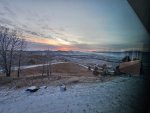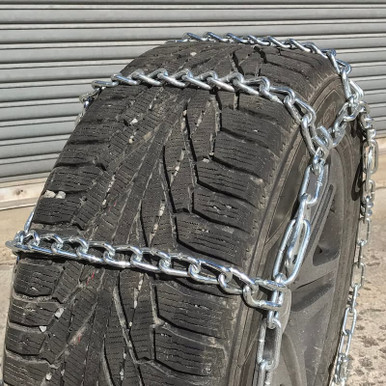Best question of the season......Get out in the prairies, away from curbs, go fast and practice stopping / steering on ice. I was not happy when the computer took over control of my need to drift around every corner or manage suspension compression going into a corner. Once you get the feel of 'being' the anti-lock computer while on ice, you'll just keep getting better. I still shut the computers off any chance I get because they take away the 'feel' of owning the road.
Keeping the situational awareness high when on ice is key. You're simply managing the mass and speed to allow controlled stops with the adhesive factors at hand. Once stopping distance on ice is calculated a person can increase awareness by looking far enough down the road to avoid all future hazards coming our way. Knowing what to do when the surprises come and what to do after an incident is also real important.
Get in a quiet, private, icy parking lot, get up to 30, tromp on the brakes hard, measure stopping distance. Then start 'feathering' the brake and practicing foot pressure to traction sensitivity....... Then do 35, then 40........Learn what foot pressure is required to apply brake pressure but still allow steering. Steering while braking is the big big key. Over-braking will cause the mass to continue in the direction of travel and you'll slide without control. Steering on ice at 100mph is possible so knowing the limits and traction coefficient of the beast you're driving is key.
After the first 22 years of rear wheel drive, bias ply, no anti-locking nothin', 8-track tapes, in 8 months of winter, a fella gets good at using your senses to keep the brakes from locking......allowing one to steer away from hazards....... After the last 22 years with 4x4/ 6x6. anti-lock, cruise control, traction control, launch control.........fm radio....... I still shut off traction control and prefer to race with my senses and not the computer. The computers are better these days but humans function just fine without them.
At the same time while on ice, we are constantly evaluating 'Escape" zones and pricing out the cheapest thing to hit when surprises come. Pops always told us to stay right, hit the right ditch if we're in trouble, hit trees or bushes instead of property, keep a window breaking tool in your pocket so when you go in the lake there's a chance you can get back out. Surprises happen mostly from not being attentive but if a fella knows that hammering on the brakes is less effective than steering out of a bad situation, you can avoid those parked cars and hit the guard rail/ trees/ light post/ instead. Avoiding the passenger compartment in an incident isn't something a person would consider practicing. If you're heading into an accident, skidding in a straight line towards the passenger door with babies behind it.....lifting the brake pedal for just a split second can allow one to steer towards the engine or trunk and reduce human harm.
Most of my incidents are in corners and braking too late which is a surprise because others say they slide through intersections. There is a 'sweet spot' where the tires grab while turning in a corner covered in ice. It's that difference between 'plowing' (going straight/ under-steer) and over-steer which will snap that back-end around.
We ice race everything up here and Bondurant teaches brake application to 'load' the front suspension causing down-force on the front rubber. Teaching the foot to push hard enough to keep traction is where car control begins. Practicing speed/ weight / steering control and road condition evaluation is the best way to gain confidence on ice.
https://bondurantracingschool.com/
The other thing Pops always taught was to avoid the ice. When stopping at an intersection move out of the icy tracks just enough to grab some of the loose snow beside the ice track. Loose snow provides traction so it helps a person stop and gives you traction for a better launch when the Tesla pulls up beside you at the red light.
I heard some HUMVEE instruction included learning to 2 foot the pedals so you're applying brake and throttle at the same time. Pop's taught us in the 60's to keep the left foot over the brake and right foot on the throttle. Depending on the vehicle, applying foot brake or light e-brake application while stuck can provide -posi-track- to the rear diff for better traction.
Tires do make a slight difference on ice and I find a deep lug was always best. We try not to drive on the ice and drive in the deep snow beside the driving lane so a deep lug wins for us. The softer rubber tires and the 7degree rule might help some folks so it's a great marketing idea. All this fancy/expensive new technology for ice might build perceived confidence but once you're sliding, you're sliding.
Situational awareness for bridge decks, corners, intersections......and lately the far side of over-passes......... is real important to avoid those panic.....loooooong.....slides before impact.
Last year while on a crowned, icy, country road, doin' 50mph..... the back end of my shiny new truck started trying to lead the drive. There was nothing expensive around so I just did my best to steer/ throttle....no brake......just feel that front rubber and the 'sweet spot' where it starts to grab. I didn't over-steer, just gently counter-drifted the back end until it stopped trying to lead and eventually the tires hooked again.
I really dig 4x4 but they tend to "push" .....go straight... when going into a corner. Depending on the 4x, throttle can often be your friend even when in a panic stop. If the 4x is trying to turn while under braking, sometimes 'burping' the throttle can help the rubber find the sweet spot.
It's time to go do some ice racing.
https://www.youtube.com/shorts/KfGullpgW7Y


